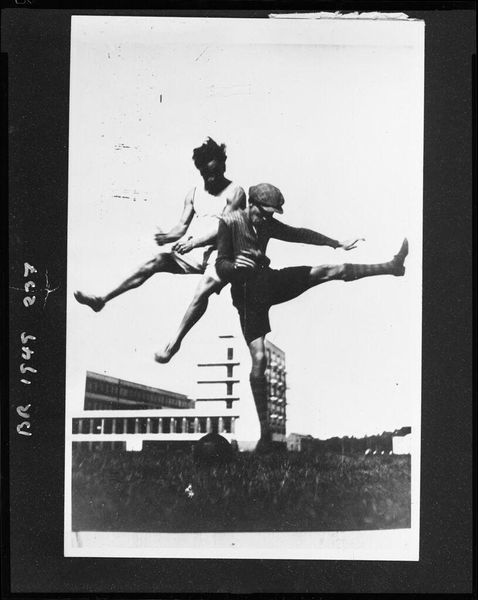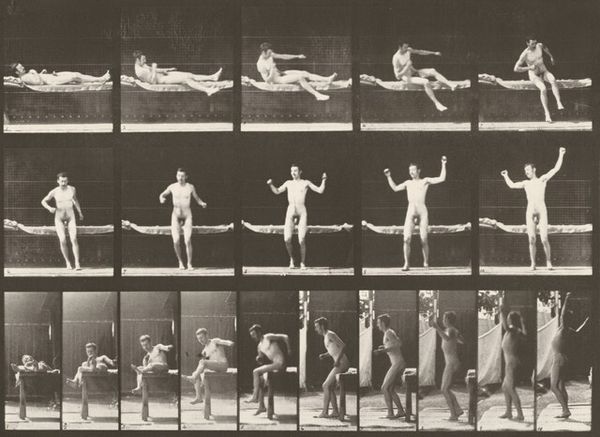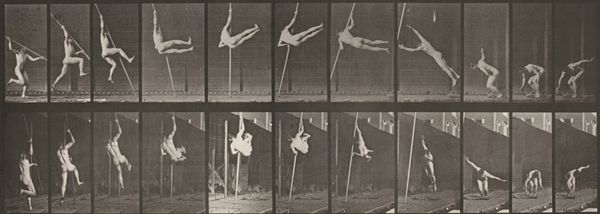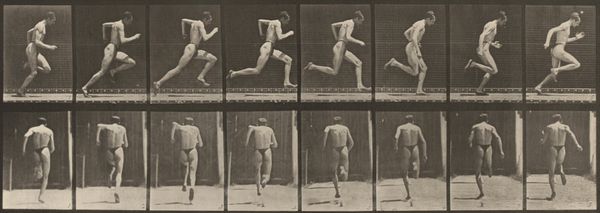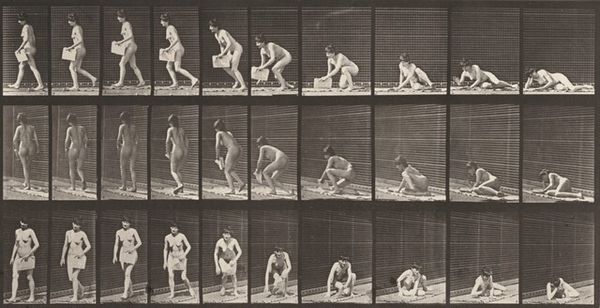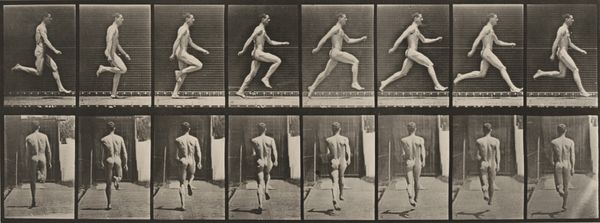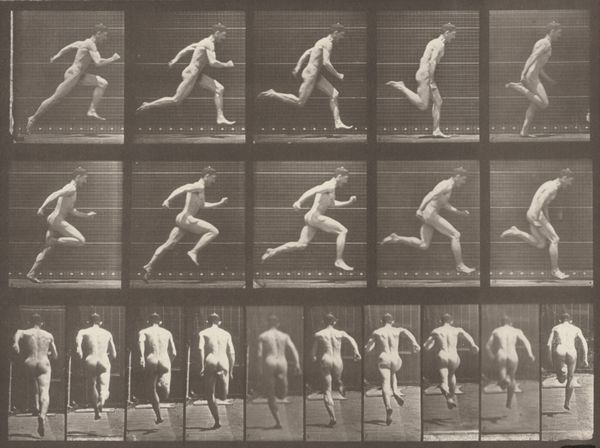
photography, gelatin-silver-print
#
kinetic-art
#
black and white photography
#
monochrome colours
#
photography
#
geometric
#
black and white
#
gelatin-silver-print
#
monochrome photography
#
nude
#
realism
Copyright: Public domain
Curator: Here we have Thomas Eakins's "Chronophotography," made around 1885. It's a gelatin-silver print. The figures appear to be running in monochrome. Editor: My first impression is one of fractured elegance. It reminds me of Muybridge’s work, a study of motion, but there's something stark and fragmented about it. Almost unsettling. Curator: Precisely. This work reflects a critical juncture, questioning Victorian ideals of the body while simultaneously advancing scientific knowledge through photographic means. Eakins was intensely interested in representing the body realistically and scientifically, which sometimes led him to challenge societal norms regarding nudity. Editor: The overlapping figures conjure fragmented classical sculpture – a classical ideal of beauty forced into the modern scientific age. I can't help but consider that runners signify energy and speed and might represent more profoundly a new pace of life. Curator: That's insightful. Given Eakins’ context, it’s essential to consider how class, gender and scientific rationalism shaped artistic representations in late 19th-century America. The bodies here are not simply athletic; they are objects of scientific scrutiny, a product of burgeoning modernity. Editor: So there's also tension in the fact that it's also clearly a constructed image, using darkroom techniques. It has its symbolism disrupted by emerging science, both confirming and questioning. A fascinating juxtaposition of then and now, past and present, abstract symbolism meets new technology. Curator: Absolutely. It reflects a broader struggle to reconcile artistic expression with objective truth—a debate which remains resonant today in the politics of representation. Eakins challenges his era and invites critical evaluation of power dynamics embedded within image production. Editor: Looking closer reveals a deeper meditation of continuity, tradition and evolution through cultural obsession: our perception of reality frozen mid-motion for study like a memento mori. The photograph reminds viewers that our ideals change over time too; like photographs themselves, the runners and the very race against time is fleeting, constantly fading and aging simultaneously. Curator: It's a thought-provoking lens for reflecting on shifting societal and scientific ideas surrounding bodies. It also serves as an early critique of power, gender, and art at large! Editor: Definitely—a convergence of beauty, symbolism and knowledge suspended.
Comments
No comments
Be the first to comment and join the conversation on the ultimate creative platform.



